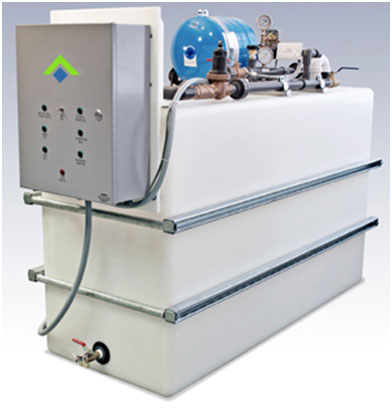First, let’s get rid of a myth here:
 Yes, often times and based on averages, attempts have been made to link a firm number in terms of flow-rate, to what can be considered a low-yielding well.
Yes, often times and based on averages, attempts have been made to link a firm number in terms of flow-rate, to what can be considered a low-yielding well.
But think about it. Is this really a realistic approach? No! Imagine two identical homes. Both have the exact same well data. In the first house we have an elderly couple, very active, often out of the house they have never run out of water.
In house #2 we have the parents, four teenagers and the grandparents – all under one roof. And – you guessed right – they almost constantly “run dry”.
So rather than defining “low-yield” by just looking at flow rates, the terminology needs to be linked to demand or even more specifically to “peak demand”.
So what are common approaches to solving low yields? In most cases either hydro fracking and/or drilling deeper.
But what are the results, guaranties, associated risks? Hydro fracking is linked to the hope of opening up existing water seams or potentially even “cracking” open new ones. But you simply don’t have a guarantee. With respect to drilling deeper, the only actual guarantee that can likely be presented, is that more storage capacity will be achieved – and that is only as long as there is no potential collapsing of the well associated.
But other than that, there is no guarantee whether new water can be found and particularly what the water conditions are going to look like. Imagine – and this is certainly not a rare incident – your water conditions are overall acceptable or even good. Now you drill deeper and open up one/multiple aquifers with simply ugly water conditions. The logical consequences will have negative impacts in many ways.
On top, all of this will have impacts on the technical and mechanical layout (e.g. replacing pumps) and also on microbiological impacts (e.g. aerobic/anaerobic column inside the well). So what if there is a customized solution to utilize your existing well, meaning ruling out any uncertainties and risks while supplying you with a sufficient amount of water for your daily needs and even peak demands.

As you can imagine, this is a more complex topic and laying it out in detail would go beyond the scope of the text here. But we’d be happy to discuss details with you and provide you with some thoughts as to how your existing well can keep up with your needs.
As usual, many questions need to be asked and technical and mechanical circumstances need to be taken into account in order to make sure, such a solution is a good fit for your objective but that is where we come into play.
Feel free to contact us and inquire about this product line in greater details. For many people this solution has provided real peace of mind.



 Certified Water Treatment Technician and
Certified Water Treatment Technician and